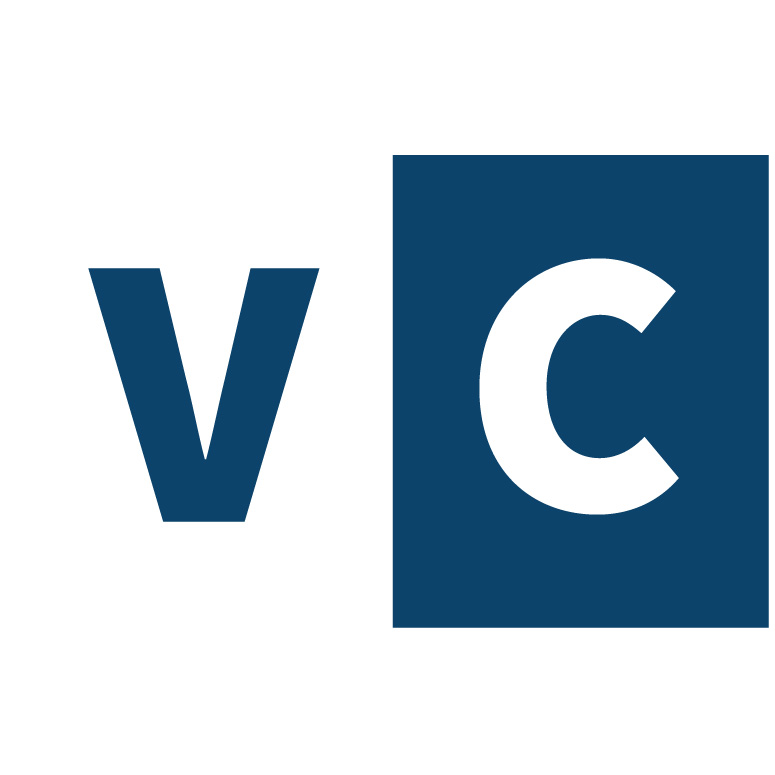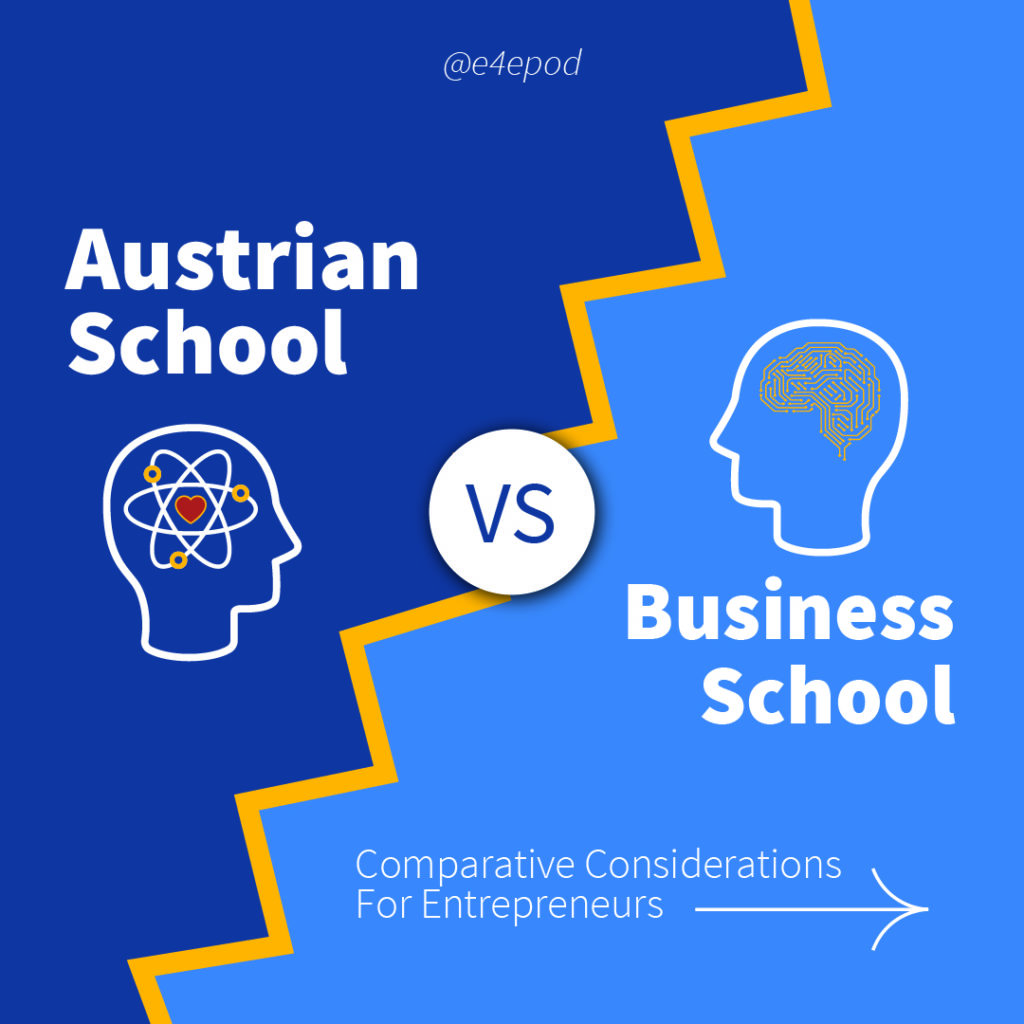How Entrepreneurs Build Their Islands Of Specialization.
Austrian economics corrects many errors of the past. Most of those emanate from an incorrect view of the economy as a static system of allocation rather than a dynamic process of value creation. One such is the exclusion of entrepreneurs from economic analysis, which has led both theorists and policymakers astray when dealing with the real economy.
A related and seemingly inconsequential problem relates to the use of rhetorical devices to guide entrepreneurs. We typically rely on examples, analogies, and metaphors to produce images of what we mean. They are intended to help us communicate an understanding that takes much less effort than analyzing theoretical models or explanations. But they also introduce problems of interpretation if they are not used carefully.
When put into practice, metaphors that convey the wrong idea or understanding are much more destructive than it might first seem. By dressing an important insight in the wrong language or using a misleading example, the efforts of entrepreneurs and businessmen can be undermined. To the degree that they extend and continue the reasoning of the analogy, their actions will be misguided. As a result, the wrong metaphor can make it impossible for them to achieve success.
The errors of improper understanding of the economy can thereby be greatly augmented by using the wrong illustration. This is, unfortunately, the case with common metaphors used to illuminate business practice.
Misleading military metaphor
On particularly unproductive error is how the language of business strategy is overwhelmingly militaristic. Markets are conquered, competitors are fought, and revenue streams are protected with moats. While strategizing is indeed a core component of both business management and military campaigns, their respective means – and aim – are hardly the same. Contrarily, they are the very opposite. This makes this rhetoric both misleading and unfortunate.
A moat, to use one of those oft-used military terms in business, was an important part of the defense in the age of kings, knights, and fortresses. They serve to keep outsiders out, to control and stop anyone from entering. But this makes no sense for a business. Sure, we can stretch the metaphor to be about protecting already conquered market territories, and thus the moat becomes a means of protecting a niche or market segment from enemies (competitors) wishing to capture the land of riches. So you protect “your” customers from other sellers.
The problem, of course, is that there is no such land of riches. The entrepreneur does not in fact conquer or occupy a territory; the entrepreneur is no king of the realm. The very opposite is true: the entrepreneur is a servant aiming to please the customer. The customer (ultimately, the consumer) is the sovereign. What does the military metaphor then convey? That the servants are waging war to supposedly conquer the right to serve the sovereign? It makes no sense.
A different metaphor is needed to avoid causing confusion and get closer to what it means to be an entrepreneur and to create a business. In addition to making intuitive sense, a useful metaphor must be an accurate figurative representation beyond what is immediately recognized. In other words, it should work also when stretched somewhat so that it can provide guidance beyond the purely descriptive.
I have previously suggested thinking of the firm as an island of specialization. This is, I believe, an apt metaphor that can be used without immediately misleading the user. It also gives a new perspective on the firm – and a productive way to think about one’s business.
To see why this is an apt (and therefore helpful and productive) metaphor, we need to first take a step back and look at what the market economy is about.
The market as a process
While most economists think of the economy as a static relationship between supply and demand, this is hardly a realistic view of the economy. For one thing, if supply and demand are rather static, where does economic growth come from? Where does entrepreneurship fit in this picture? While this model suggests a reason for military language (the market is a limited space to be conquered or lost), the model, sadly, has room for neither growth nor entrepreneurship.
The market economy is better understood as a process, an endless “discovery procedure” in which entrepreneurs figure out new and better ways of providing goods and services that consumers appreciate. It is not a smooth process, but one that sometimes takes leaps forward and at times does not seem to be moving much at all. It depends on the successes (or lack thereof) of entrepreneurs in imagining how to better serve consumers.
From a market process perspective, entrepreneurs are constantly searching for better products, more effective production processes, simpler ways of running businesses. And they glance at and learn from each other, thereby continuously adjusting their efforts to create more value. From time to time, someone comes up with a good or service that gets widely adopted and changes consumers’ behavior. This disrupts the market, undermining some entrepreneurs’ business models while opening new opportunities. Entrepreneurs adjust to this new situation quickly or succumb to the change.
Seeing this process from the point of view of consumers, this constant change is directed toward facilitating more value creation. That is what better products and services means; that’s also what more products and services mean; and it is what increased productivity means. Everything aims, directly or indirectly, to please consumers, whatever their wishes and wants turn out to be. Market progress, it follows, is economic growth which is, in turn, increased wellbeing for consumers. And we are all consumers.
Economy as production
Economists of old focused on this process in terms of productivity efforts, and especially producing more (value) for less (cost). It is thus a matter of using the most productive resource of all – labor – in the best way possible. How do you get more output from labor? One way, not very effective but tried for millennia, is to simply have people work more hours.
A much better way is to use labor power in smarter ways and have people collaborate in production. By having people specialize and develop specific expertise, their productivity increases immensely. But it also means production is organized in processes where different people do different things: the power of labor in production is divided onto many different tasks. For this reason, Adam Smith begins his magnum opus The Wealth of Nations with several chapters discussing this phenomenon: the division of labor.
While it was true hundreds of years ago, it is just as true today. The market process progresses through adopting ever more intensive specializations. The expertise needed for common jobs today is much, much deeper yet also narrower than was the case only decades ago. This is the outcome of imagining new products that were never before produced. But it is also about doing things differently (such as Henry Ford’s introduction of assembly line production in automobile manufacturing). More tools are innovated, which need people specializing to produce them.
What is interesting in this process is that it keeps moving ahead without our noticing it. And it happens through entrepreneurs imagining new things they can produce and new ways to produce them. We do not always see it, because what is right in front of our eyes appears normal and not a step ahead from yesterday and a steppingstone for a different tomorrow.
So entrepreneurs are in a very real way in the business of creating our tomorrow. Which takes us back to the role of the entrepreneur and the firm as an island.
The role of the entrepreneur
Core to the market process of constant change, the discovery procedure in which we collectively figure out new and better ways to serve consumers, is the entrepreneur’s production undertaking. Typically, entrepreneurs realize their imagined product through a firm. To be successful and earn a return, it is not sufficient to simply copy what others are already doing.
This point is obvious if we consider the market’s constant progression. Production takes time. If you start doing today what others are already doing today, you’ll not have a product to sell until a later time – when other entrepreneurs have already moved on. So copying what others are doing in the present will put the entrepreneur in an endless game of catch-up
But more pertinent is that consumers change their minds and their behaviors. Just because something sells well today doesn’t mean it will sell well tomorrow. So to be successful at all, the entrepreneur needs to imagine what the future will be like and attempt to meet it. The best way of doing this is to try to place oneself in the customer’s shoes and figure out better ways to serve him or her.
The firm as an island
What this means is that the firm is not simply a production facility like any other, and shouldn’t be. It should be a reflection of the entrepreneur’s imagination of what needs to be done – and how – to meet the imagined future. In other words, the inside of the entrepreneur’s firm is different from the surrounding market. Perhaps other production processes are used, they are organized differently, use different expertise or management techniques, unique tools, etc.
The firm, then, is an innovation in itself: it is something unique that represents the entrepreneur’s best guess for how to realize the imagined future given what resources (including, most importantly, people and their skills) are available. It should therefore also evolve over time, both as adjustments to changes in the market overall (including competitors) and as implementations of new or updated visions of the future.
But how is this an island?
The firm is an island of specialization because it utilizes a unique way of organizing resources, unique knowledge and expertise, and is thus different from the rest of the market (the ocean). It also provides direction for others, whether they are competitors who need to adjust to the firm’s innovations, people seeking employment where they can better leverage their skills, or customers looking to be served better.
The firm as an island also because it is a structure that provides solidity to amoebic, sometimes seemingly anarchic, production processes and that both suppliers and customers can rely on over time. It is an aggregate of resources and processes with a uniform exterior and brand that you know and trust whether or not its internals, both people and processes, stay the same. It is firm ground in an otherwise ever-changing and treacherous ocean.
The entrepreneur’s task is to keep building the island by expanding its land mass and height, to make sure it remains attractive and can provide satisfaction to visitors and those settling there for longer time periods. It is also important to protect the island and its inhabitants from storms and counter erosion as waves keep rolling in from the ocean.
Note how this is different from the militaristic metaphors. The market economy is the ever changing, and possibly treacherous, ocean within which the entrepreneur can establish an island as a safe haven. The role of entrepreneurs, managers, and businessmen is then to make the island as habitable and attractive as possible, to support and facilitate trade relations with other islands, and build infrastructure and supports to protect it from storms and other weathers that can wreak havoc on island life.
Rather than focusing on destructive conflict, the island metaphor focuses on the firm as a system – or even organism – that is related to other islands and surrounded by an ocean. This ocean, to extend the metaphor, can be calm waters facilitating transportation and inter-island relationships, access to resources (think fish to eat), etc. But it can also bring stormy weathers, untamable waves, and cause ships to go under. These weathers cannot be controlled, but a well-prepared island community can ride out even bad storms.
Certainly, there is also room for violent conflict. But focus is on productive efforts, on building and creating, and on creating and maintaining valuable relationships. It is also a focus on internal affairs and the reciprocal nature of relationships, the wellbeing and welfare of those who are inhabitants or temporarily visits the island.
The firm as an island is also instructive for development and investment, as a barebones island would be unlikely to attract both inhabitants, visitors, and trading partners. An island is further of little use unless it can be sufficiently elevated above the ocean to not be submerged as sea levels rise or extreme weather cause tsunamis.
The island is a far cry from the fortress intent on keeping others out by raising obstacles and building military might to repel enemy forces or subdue neighboring lands.
This essay first appeared in Austrian Economics In Contemporary Business Applications published by the Mises Institute.







Responses